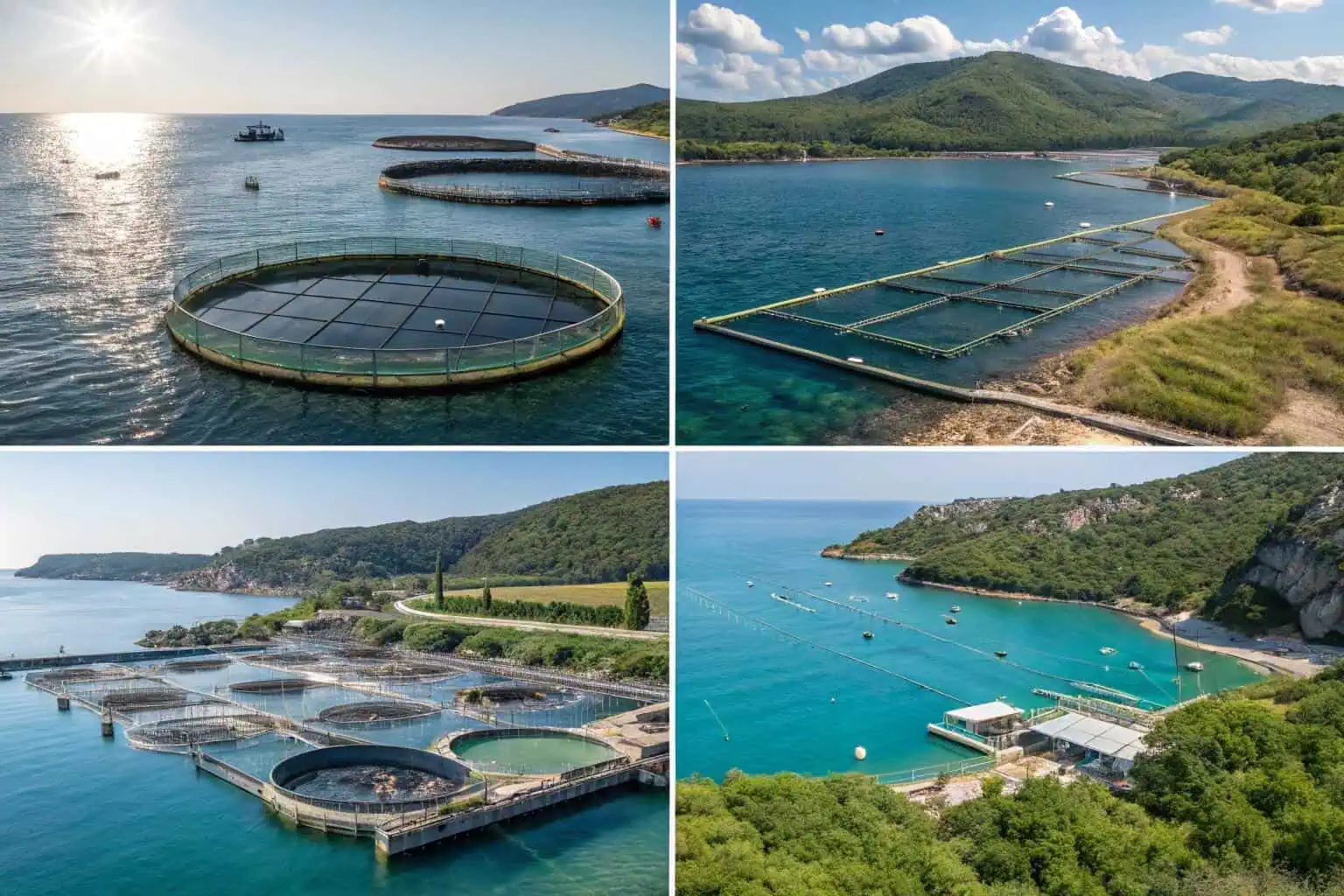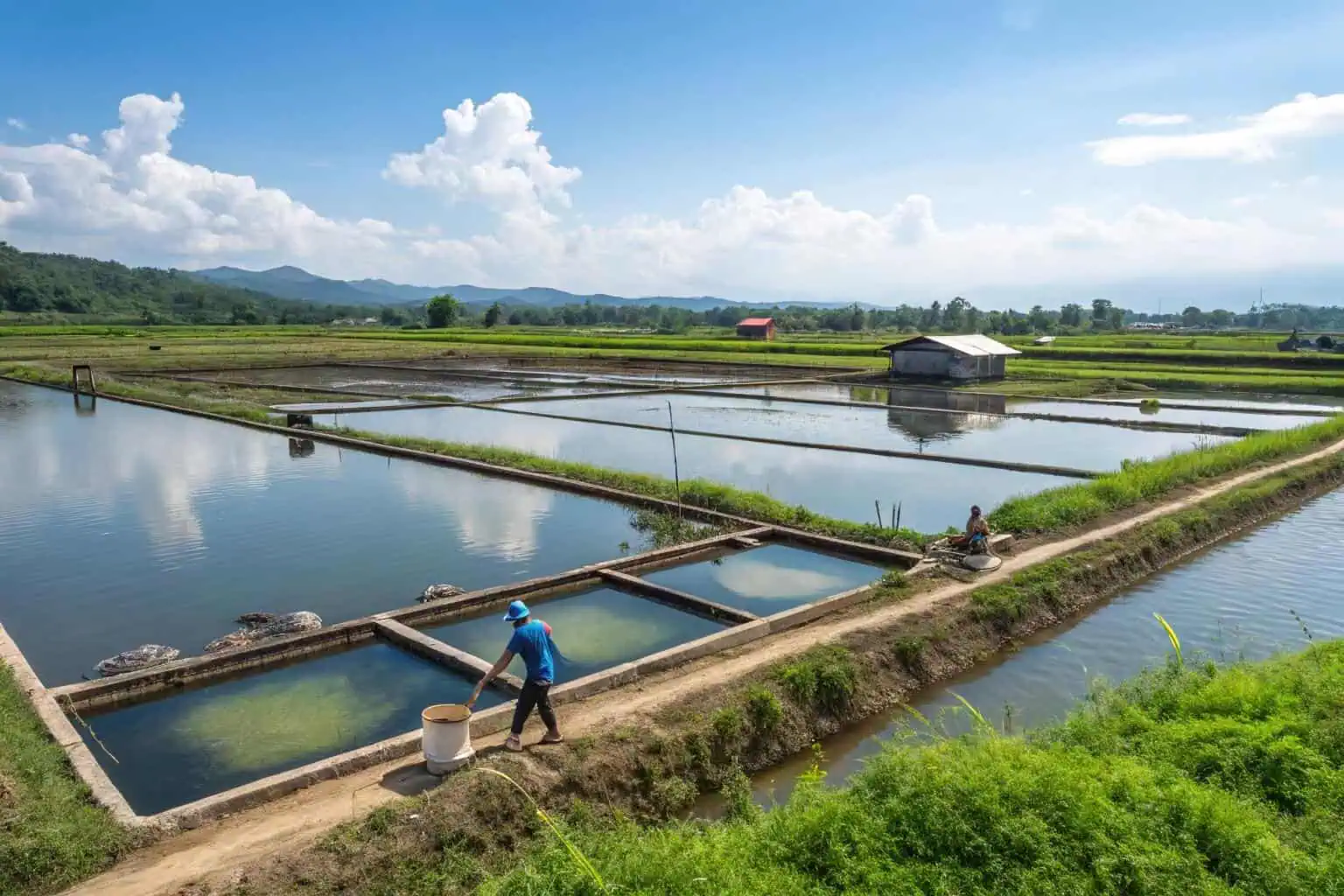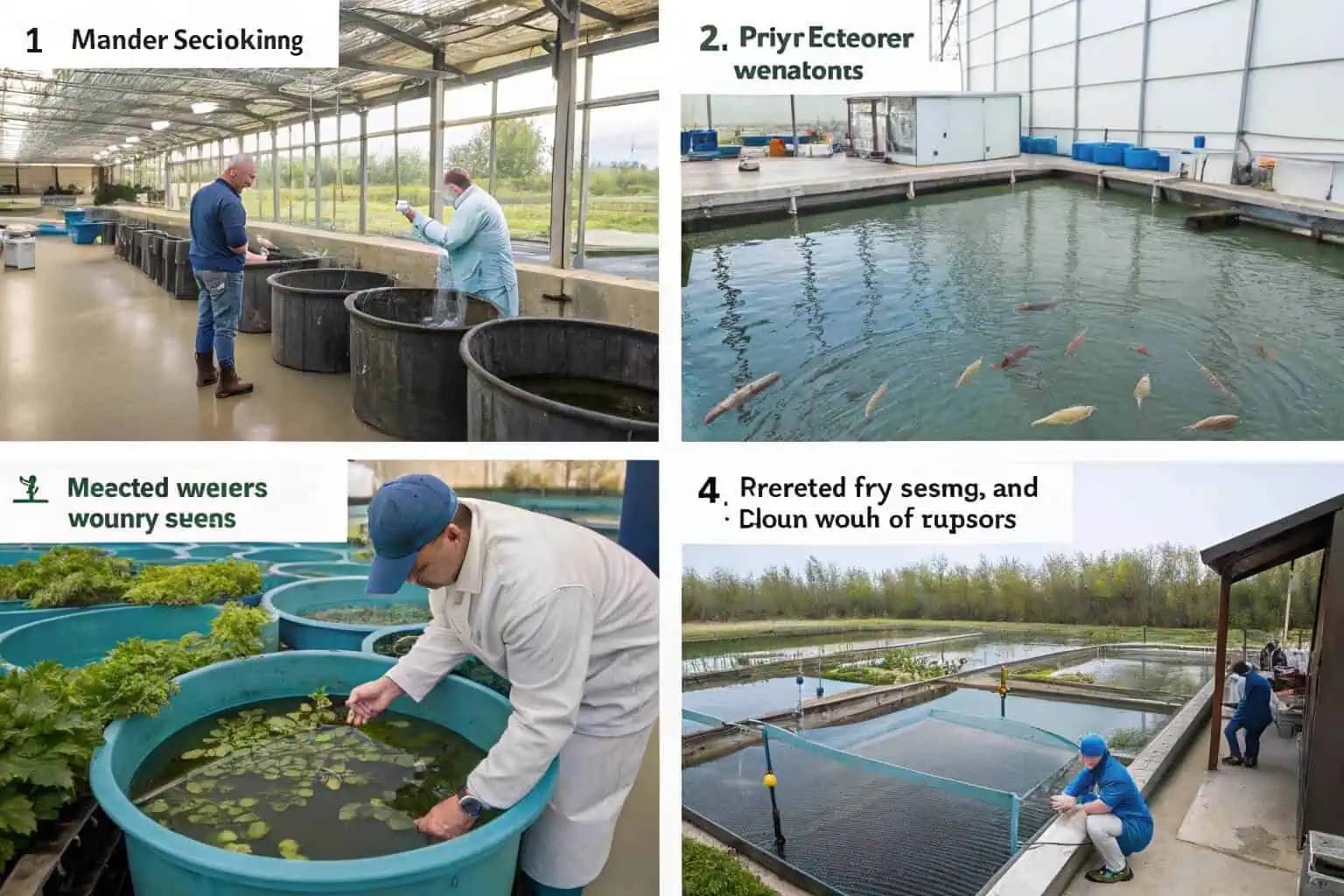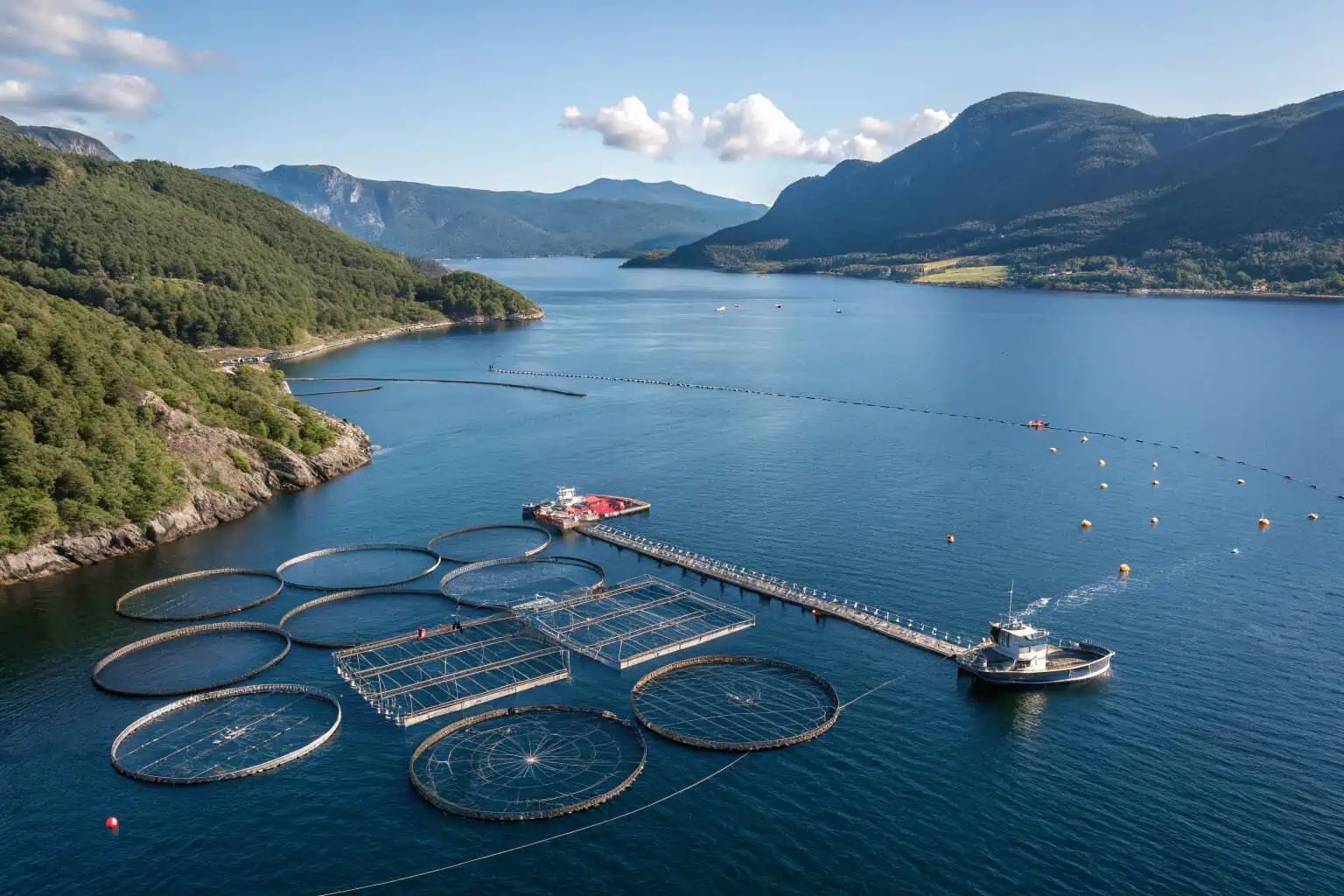What are the 4 types of aquaculture?
Struggling to understand where your seafood comes from? The world of fish farming is vast and confusing, but it's key to our food supply. Let's simplify it.
The four main types of aquaculture are freshwater, marine, brackish water, and integrated multi-trophic aquaculture (IMTA). These methods involve farming fish, shellfish, and aquatic plants in controlled environments like ponds, ocean cages, or specialized tanks.

Understanding these types is the first step. But as someone who has watched this industry for years, I know there's much more to it. Let's dive deeper into how it all works.
What is the most common type of aquaculture?
Wondering which fish farming method dominates the industry? With so many options, one stands out for its simplicity and efficiency, making it a global standard for producing aquatic food.
Freshwater aquaculture, especially pond-based farming, is the most common type. Its lower cost, easier management, and adaptability make it the preferred choice for many farmers worldwide, particularly in Asia where it contributes significantly to food production.

I've seen firsthand why pond farming is so popular. It's accessible and effective1. But what makes it stand out from other methods? Let's break it down.
Why Ponds Dominate
Pond systems are relatively cheap to build and operate compared to high-tech marine setups. They allow farmers to control the environment for species like tilapia2 and carp. I remember visiting a farm where the owner managed dozens of ponds with a small team, a testament to its efficiency. The simplicity means more people can enter the business without massive upfront investment, which is why it has become the backbone of aquaculture3 in many developing nations. It democratizes food production in a way that more complex systems cannot.
Comparing Common Aquaculture Systems
To give you a clearer picture, here’s how different systems compare. I've put together a simple table to highlight the key differences I've observed over the years.
| System Type | Environment | Common Species | Key Advantage |
|---|---|---|---|
| Pond Culture | Freshwater | Tilapia, Carp, Catfish | Low cost, easy management4 |
| Marine Cages | Saltwater (Ocean) | Salmon, Tuna, Sea Bass | High yield, open water |
| Raceways | Flowing Water | Trout, Char | High control over water quality5 |
| Recirculating Systems (RAS) | Indoor Tanks | Barramundi, Shrimp | Minimal water use, biosecure |
While pond culture is the most widespread, other systems like Recirculating Aquaculture Systems (RAS) are gaining traction for their sustainability. They use very little water and can be set up anywhere, even in cities. However, the high initial cost and energy consumption are still significant barriers for many.
What are the 4 stages of aquaculture?
Ever wonder how a fish gets from an egg to your plate? The journey involves distinct, carefully managed phases. Understanding these stages reveals the complexity behind modern fish farming.
The four stages of aquaculture are the hatchery, nursery, grow-out, and harvest. It starts with breeding in the hatchery, followed by raising young fish in the nursery, growing them to market size during the grow-out phase, and finally collecting them at harvest.

From my experience, each stage is a critical link in the chain. A failure in one can jeopardize the entire operation6. Let's look at what happens in each phase.
From Egg to Adult
The process is a delicate science. In the hatchery, I've seen technicians carefully inducing spawning7 to produce millions of tiny larvae. These are then moved to nursery tanks where they are nurtured with specialized diets until they are strong enough for the next phase. It's a high-stakes period where mortality can be high if water quality or feeding isn't perfect. I find this stage fascinating because it's where genetic selection8 and advanced breeding techniques can make a huge difference in the final product's quality and resilience.
The Key Phases of Production
The grow-out stage is where the magic happens—and where most of the costs are. Fish are fed specialized diets to grow quickly and healthily. Finally, harvesting is a massive logistical effort. I once watched a team harvest a salmon cage, and the coordination was incredible.
| Stage | Primary Goal | Key Activities | My Observation |
|---|---|---|---|
| Hatchery | Breeding and hatching eggs | Broodstock management9, spawning | Requires specialized knowledge |
| Nursery | Rearing larvae and fry | Feeding small organisms, water quality | High mortality risk period10 |
| Grow-out | Growing fish to market size | Regular feeding, disease monitoring | The longest and most costly stage |
| Harvest | Collecting market-ready fish | Draining ponds, netting cages | Labor-intensive but rewarding |
Each step requires constant monitoring. Today, technology like AI-powered cameras and sensors is helping farmers track fish health and feeding behavior in real-time, making the process more efficient and reducing waste.
What is an example of aquaculture?
Need a real-world example of aquaculture in action? One particular fish has become a global icon of successful fish farming, demonstrating the industry's potential from a simple cage to your dinner table.
A classic example of aquaculture is salmon farming. Salmon are raised in large net pens in coastal ocean waters. This process involves the full aquaculture cycle, from hatchery-raised smolts to harvesting full-grown fish for the global market.

I've always been fascinated by salmon farming. It's a perfect case study of industrial-scale aquaculture11. It shows both the incredible successes and the significant challenges the industry faces.
The Salmon Farming Journey
It starts in freshwater hatcheries12 where eggs are incubated. Once the young salmon, or smolts, are ready, they are transferred to massive circular cages in the ocean. I've stood on the edge of these cages, watching thousands of salmon swim below. The scale is immense. They are fed nutrient-rich pellets13 until they reach several kilograms. This journey from freshwater to saltwater mimics their natural life cycle, but in a controlled environment designed for maximum growth and survival.
Global Impact and Challenges
Salmon farming is a multi-billion dollar industry, but it's not without problems. I've seen how issues like sea lice, disease outbreaks, and waste management can impact the local environment. This has pushed the industry toward more sustainable practices14, like using cleaner fish to control pests instead of chemicals. It's a constant balancing act between production and protecting the ocean. The industry is also exploring offshore farming15 in deeper waters to minimize coastal pollution, which I believe is a promising step forward.
What are the 4 types of cage?
Curious about the structures used in fish farming? The cages that hold the fish are not all the same. Different designs are used to tackle specific environmental challenges and farming needs.
The four main types of aquaculture cages are floating, submersible, fixed, and offshore cages. Floating cages are common for easy access, submersible ones protect against storms, fixed cages suit shallow waters, and offshore cages are built for large-scale, open-ocean farming.

Cage design is a field of constant innovation. I've seen how the right cage can make all the difference in a farm's success16. Let's explore these designs.
Choosing the Right Cage
The choice depends on the location. Floating cages are great for calm, protected bays. But for areas with rough seas, submersible cages17 that can be lowered below the surface are a game-changer. I remember a farmer telling me how his submersible cages survived a hurricane that destroyed his neighbor's floating ones. Fixed cages, anchored to the seabed, are simpler but are limited to shallow waters. The real frontier, in my opinion, is the development of robust offshore cages18 that can withstand the open ocean.
A Comparison of Cage Technologies
Each cage type has its pros and cons. Here's a table to simplify it based on what I've learned.
| Cage Type | Best For | Key Feature | My Take |
|---|---|---|---|
| Floating Cage19 | Sheltered, calm waters | Easy access for feeding/monitoring | Most common and cost-effective |
| Submersible Cage20 | Storm-prone areas | Can be lowered to avoid bad weather | A smart investment for risky locations |
| Fixed Cage | Shallow, coastal areas | Anchored to the seabed | Limited by depth and location |
| Offshore Cage | Deep, open ocean | Large and robust for high seas | The future of large-scale farming |
As we move farming further offshore to reduce coastal impact, these massive, durable offshore cages are becoming more important. They represent a major engineering challenge but offer a path to more sustainable, large-scale production away from sensitive coastal ecosystems.
Conclusion
Aquaculture is a diverse and essential industry. From freshwater ponds to offshore cages, it provides a vital food source, but it must grow sustainably to protect our planet for the future.
-
Learn how pond farming's simplicity and effectiveness make it an ideal starting point for new farmers. ↩
-
This resource will explain the advantages of tilapia farming and its impact on the aquaculture industry. ↩
-
Exploring this link will provide insights into how aquaculture supports sustainable food systems globally. ↩
-
Exploring this resource will provide insights into the economic advantages and management strategies in aquaculture. ↩
-
This link will help you understand the importance of water quality control in maximizing fish health and production. ↩
-
Exploring this will provide insights into risk management and operational integrity. ↩
-
Understanding inducing spawning is crucial for improving breeding techniques and enhancing fish production. ↩
-
Exploring genetic selection can reveal how it enhances fish quality and resilience, vital for sustainable aquaculture. ↩
-
Understanding broodstock management is crucial for successful fish breeding and can enhance your aquaculture practices. ↩
-
Exploring the causes of high mortality risk can help you implement better strategies to ensure the survival of your fish. ↩
-
This resource will provide insights into industrial-scale aquaculture, highlighting its benefits and environmental challenges. ↩
-
Exploring this link will provide insights into the crucial role of freshwater hatcheries in salmon farming. ↩
-
This resource will explain the importance of nutrient-rich pellets in promoting healthy growth in farmed salmon. ↩
-
Exploring sustainable practices can reveal innovative solutions that benefit both the industry and the environment. ↩
-
Understanding offshore farming can highlight advancements that reduce coastal pollution and enhance fish health. ↩
-
Learn how effective cage design can significantly improve the overall success and efficiency of farming operations. ↩
-
Explore this link to understand how submersible cages can enhance fish farming, especially in challenging sea conditions. ↩
-
Discover the advancements in offshore cages that are making fish farming more resilient and sustainable in open ocean environments. ↩
-
Explore the advantages of Floating Cages for aquaculture, including cost-effectiveness and ease of access. ↩
-
Learn how Submersible Cages can safeguard fish stocks in storm-prone areas, making them a smart investment. ↩